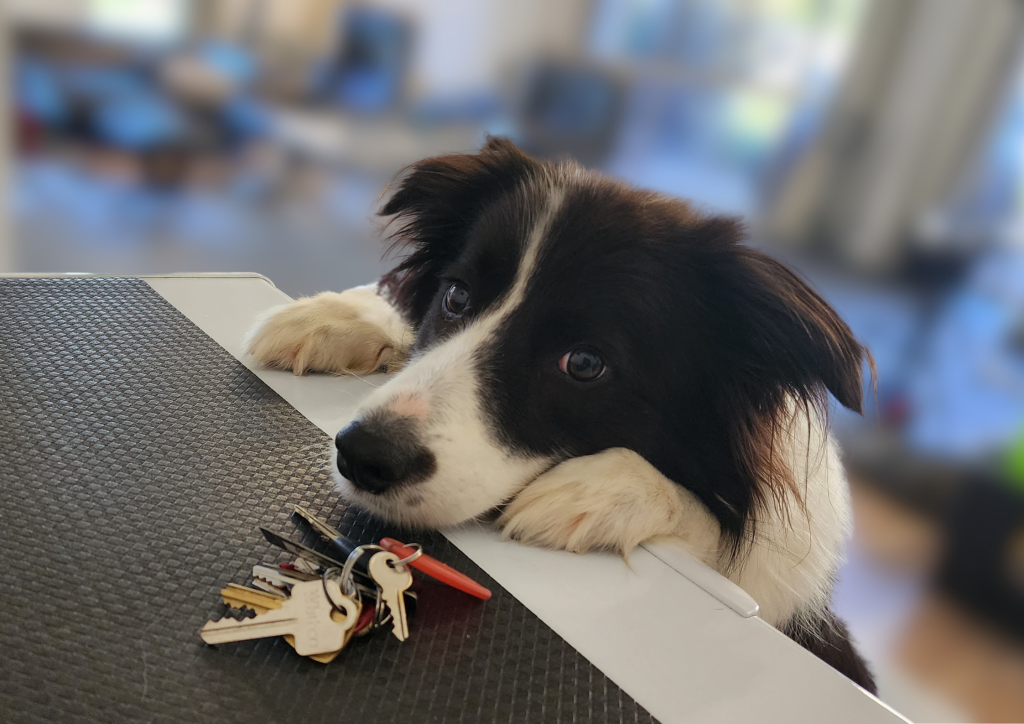How To Teach Your Dog To Find Your Keys – The First Step

In this guide, we’ll explore the first step in training your dog to find your keys, starting in your chosen training area.
This engaging and enjoyable activity is suitable for dogs of all experience levels, whether they are familiar with scent work or not.
The aim is to create a strong positive association between the keys and a reward.
Using a clicker in training removes the personal association that comes with a verbal marker, helping your dog to focus on the task and not the trainer.Charlotte Bryan
What You’ll Need:
- Clicker: A tool to create a consistent marker for your dog.
- Treats: High-value treats that your dog loves.
- Keys: Any set of keys will work.
Step-by-Step Guide:
1. Set Up Your Supplies:
- Ensure you have your clicker and treats ready.
- Clear the training area of distractions to help your dog focus.
2. Introduce the Clicker:
- The clicker acts as a marker, signaling to your dog that they’ve performed the desired action and a reward is coming. It helps to remove the personal association, making the reward clearly linked to the task or object.
3. Encourage Initial Interaction:
- Place the keys on the ground where they are easily visible.
- Step back and wait for your dog to show interest in the keys.
4. Mark and Reward:
- The moment your dog interacts with the keys (sniffing or touching them), click the clicker and immediately offer a treat.
- Place the treat on the ground near the keys, rather than giving it directly from your hand. This reinforces that the reward is connected to the keys.
5. Repeat and Reinforce:
- Repeat this process multiple times, allowing your dog to understand the connection between the keys, the click, and the treat.
- Keep the training sessions short, around 2-3 minutes, to maintain your dog’s interest and prevent boredom.
6. Minimize Direct Guidance:
- Avoid pointing at the keys or gesturing. Allow your dog to use their own curiosity and problem-solving skills to locate the keys. This fosters independent thinking and strengthens the association between the keys and the reward.
7. Gradual Challenge:
- If your dog doesn’t show interest initially, you can place a treat closer to the keys. However, avoid this if possible to ensure the treat is not directly linked to the proximity of the keys.
- Gradually move the keys to different locations in the training area to encourage your dog to search.
Success Tips:
- Consistency: Use the clicker and treats consistently. This helps your dog understand what behaviour is being rewarded.
- Positive Reinforcement: Always use positive reinforcement. If your dog makes a mistake, ignore it and wait for the correct behaviour.
- Short Sessions: Keep training sessions brief and fun. This prevents your dog from becoming bored or overwhelmed.
- Patience: Understand that every dog learns at their own pace. Patience is crucial for successful training.
By following these steps, you’ll establish a solid foundation for your dog to learn how to find your keys. The initial stage focuses on creating a positive association with the keys and reinforcing it through repetition and rewards. With time and consistent practice, your dog will become proficient at locating your keys!

